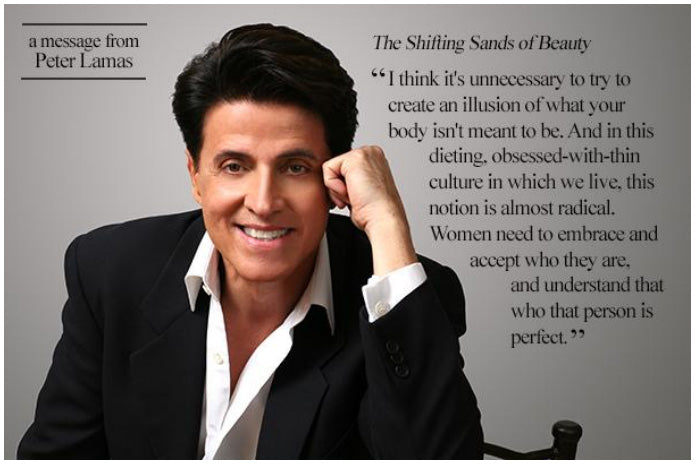
One of the most famous early depictions of a human is the "Venus of Willendorf” – a tiny 4-inch statuette of a very full-figured, voluptuous woman. Found in 1908 by archaeologist Josef Szombathy near the town of Willendorf, Austria, it is believed to be over fifteen thousand years old. The statue, which may have been a reflection of women at that time, probably was worshipped and cherished for its beauty and curves.
Today, however, a woman with the same body type might likely be over-looked, ignored, or perhaps even ridiculed. Does this mean that this woman is not beautiful? In my experience at watching the so-called "standards of beauty" shift and evolve, it just indicates that people are fickle, and that what one considers "beautiful" is set by forces other than just brute "nature." Humans are the only animals on the planet that can convince themselves wholeheartedly that a
certain look - a particular hair color, style, body shape and height - is the pinnacle of beauty; and then the next day decide this same look is grotesque.
Over the last 30 years of working in the "world of beauty," I have witnessed some changes in this mercurial "standard of beauty" which I find disturbing - even dangerous.
During the 1950's, Marilyn Monroe, the iconic sex symbol of that era, had a BMI (Body Mass Index) of 20 (which is considered by the insurance agencies, which set this standard, to be ideal).
Perhaps Monroe, who already had a habit of controlling her weight with addictive diet pills, would have been ordered to drop 30 lbs.
From 1974 to 1984, once a month I trekked to Lincoln Center to style the hair for the ballerinas in George Balanchine's renowned troupe, the New York City Ballet. I came to know many of these girls quite well. It was not a secret that if you wanted to work in the company, you'd have to starve yourself. I'd watch them drink water and eat a leaf of lettuce, and then do their exhaustive training regime. I'd see the results of this abusive lifestyle show up in their hair. It was dull, very weak, and would literally be coming out in clumps into my brush. Balanchine can
be credited - or blamed - for creating the notion of the ideal ballet body. He was always telling his dancers that he wanted to "see their bones." Unfortunately, many of Balanchine's ballerinas are now the ones who control many professional companies, so his perverse legacy continues
Quite honestly, I believe that it is insulting to women to try to force them to squeeze into what is, in reality, an absurd (and always changing) ideal. My advice to my own clients is always, "Do what suits you best. You can't force your body to be what it isn't." That ultra-thin look that is so popular now is but a fleeting dream. Most women would have to literally starve themselves to look like Kate Moss. Today the ideal woman has the legs and hips of an adolescent boy and the
breasts of a mature woman. That's almost impossible for most of us to achieve without surgery. And with genetics playing the largest role in how tall you are and what your body shape is, in my opinion this type of surgical intervention is downright brutal.
I think it's unnecessary to try to create an illusion of what your body isn't meant to be. And in this dieting, obsessed-with-thinness-culture in which we live, this notion is almost radical. Women need to embrace and accept who they are, and understand that who that person is perfect.




